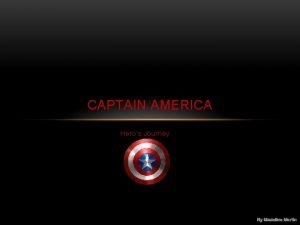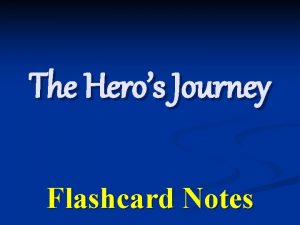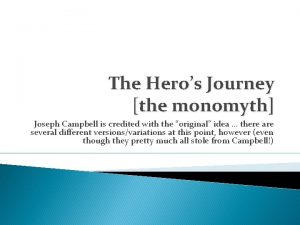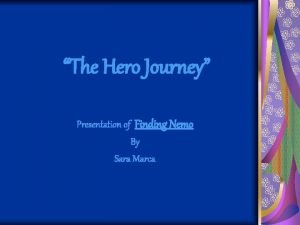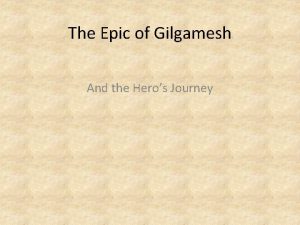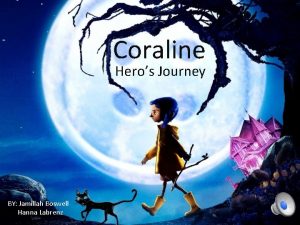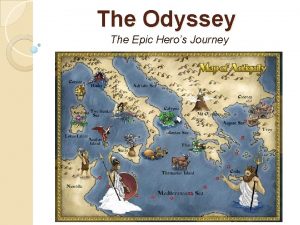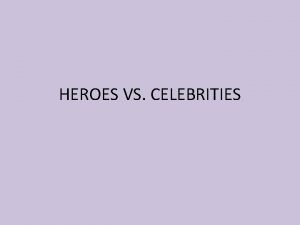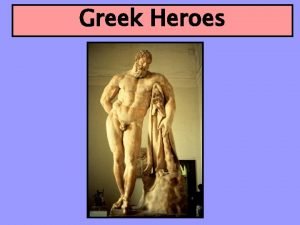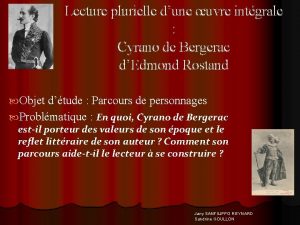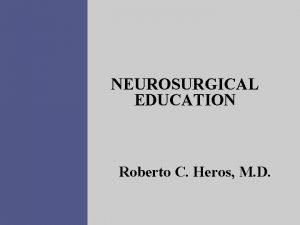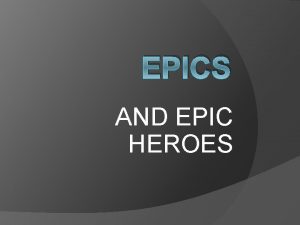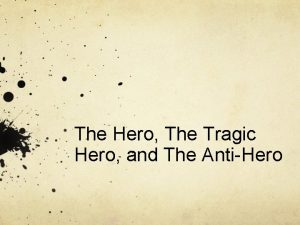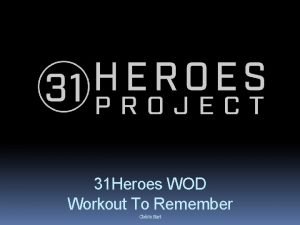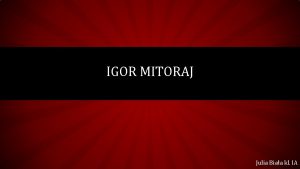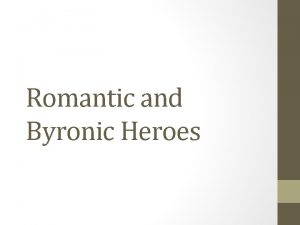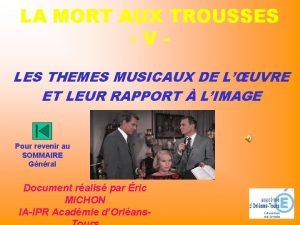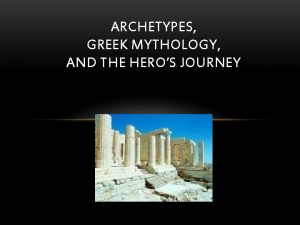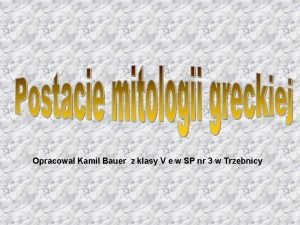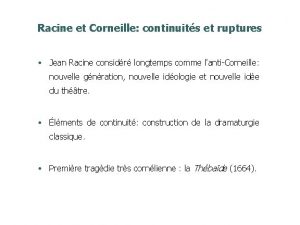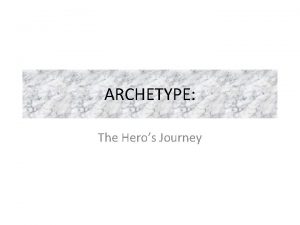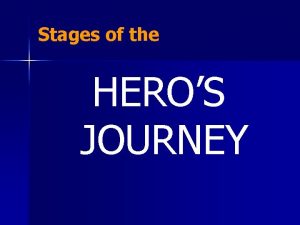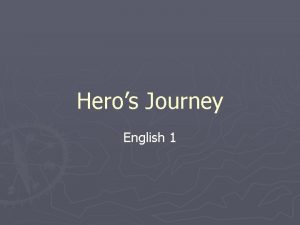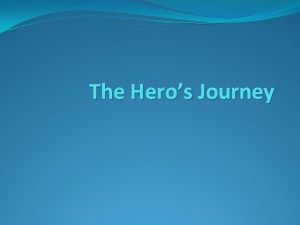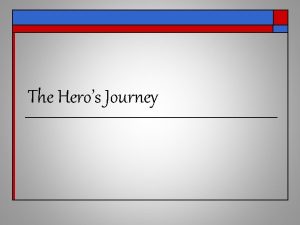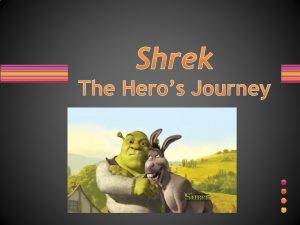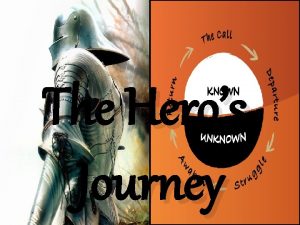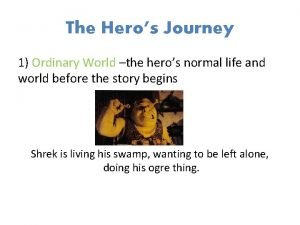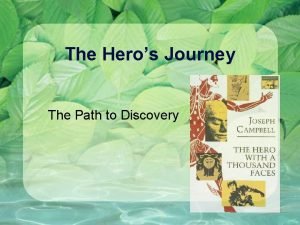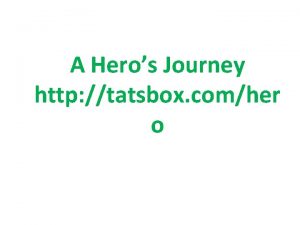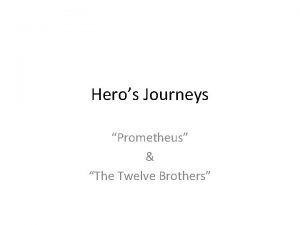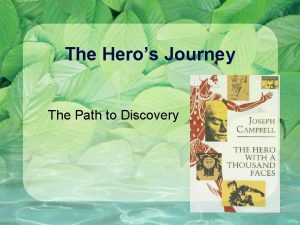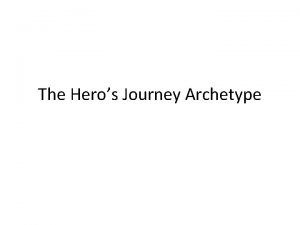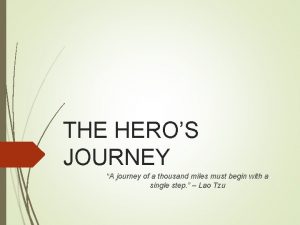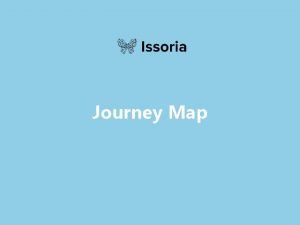What is The Heros Journey The Heros Journey























- Slides: 23

What is The Hero’s Journey? • The Hero’s Journey is a pattern of narrative identified by the American scholar Joseph Campbell that appears in drama, storytelling, myth, religious ritual, and psychological development. • It describes the typical adventure of the archetype known as The Hero, the person who goes out and achieves great deeds on behalf of the group, tribe, or civilization. • There are many different versions of the Hero’s Journey that retain the same basic elements.

ARCHETYPES APPEARING IN THE HERO’S JOURNEY Joseph Campbell was heavily influenced by the Swiss Psychiatrist Carl Jung whose theory of the collective unconscious involved archetypes—recurring images, patterns, and ideas from dreams and myths across various cultures. Below are several archetypes often found in myths. � HEROES: Central figures in stories. Everyone is the hero of his or her own myth. � SHADOWS: Villains, enemies, or perhaps the enemy within. This could be the repressed possibilities of the hero, his or her potential for evil. � MENTORS: The hero’s guide or guiding principles.  � HERALD: The one who brings the Call to Adventure. This could be a person or an event. � THRESHOLD GUARDIANS: The forces that stand in the way at important turning points, including jealous enemies, professional gatekeepers, or even the hero’s own fears and doubts. � SHAPESHIFTERS: In stories, creatures like vampires or werewolves who change shape. In life, the shapeshifter represents change. � TRICKSTERS: Clowns and mischief-makers. � ALLIES: Characters who help the hero throughout the quest. � WOMAN AS TEMPTRESS: Sometimes a female character offers danger to the hero (a femme fatale)

Separation Return Invitation

1)Separation/Departure • Leaving the ordinary world - The hero is presented with a problem, challenge or adventure • The hero may refuse the challenge or journey, The hero meets a mentor to gain advice or training for the adventure

Circle the stage (blue box) that matches both your hero and Odysseus. Refusal Call to adventure Supernatural aid Separation

1)Separation/Departure Example from The Odyssey with details Example from your movie with details Quote from The Odyssey with page number

2) Initiation/Trials • Tests, Allies, Enemies - The hero faces tests, meets allies, confronts enemies & learn the rules of the Special World.

Circle the stage (blue box) that matches both your hero and Odysseus. Meeting with the Goddess/Lo ve The Road of Trials Peace and Fulfillment Invitation

2) Initiation/Trials Example from The Odyssey with details Example from your movie with details Quote from The Odyssey with page number

3) Return with the gift or Prize • Return with Elixir - The hero returns from the journey with the “elixir”, and uses it to help everyone in the Ordinary

Circle the stage (blue box) that matches both your hero and Odysseus. The Ultimate Boon Rescue from Without Freedom to Live Return

3) Return with the gift or Prize Example from The Odyssey with details Example from your movie with details Quote from The Odyssey with page number

Thesis Development http: //youtu. be/w. Czu. AMVm. IZ 8 • Step 1: How do Odysseus and my hero both follow the steps of the Hero’s Journey? • Step 2: What are some of the ways they both follow the same steps? Which of the blue boxes did you use for the 3 stages of the journey? in the bubbles below, write the 3 that you already used to make the connections between your hero and Odysseus. 2 1 Separation 3 Invitation Return • Step 3 Odysseus and my hero, ______, both follow the steps of the Hero’s Journey when they ___________, __________. 1 3 2

Thesis Development 2 Character’s name Authors name • Both Odysseus in ______’s Epic Poem, Title of the book/poem/movie The Odyssey, and the modern day superhero Your Character’s name Producer/Movie company’s name ____________ , in_______ Title of the book/poem/movie __________ follow the steps of the Hero’s Journey when they ___________, __________.

Thesis Development 3 Now, tidy up your points and make your thesis your own. • …follow the standard path of the mythological adventure of the hero represented in the rites of passage: separation, initiation, and return. • …follow the stages of this timeless story-structure which has existed for thousands of years.

Sample Thesis Statement Put your Thesis together here Both Odysseus in Homer’s Epic Poem, The Odyssey, to the modern day super hero Shrek from Dream. Works Animation, based on William Steig’s picture book with the same name, follows the stages of this timeless story-structure which has existed for thousands of years.

Attention Grabber Introductory Paragraph Bridge Put your Thesis together here

http: //youtu. be/Rnq 17 dyxyu 4 Do Not use Using a dictionary definition can be When you use an online quote the second step is to You should use

Attention Getters: Bait Your Hook and Lure 'Em In Effective Writing • An attention-getter (A-G) is the first part of the introduction. As the name implies, it must grab the attention of readers to entice them. to read on. If the A-G is one sentence, it must be a heck of a sentence. Most A-G's are at least 2 -4 sentences, depending on the technique you use and topic. They should surprise, tickle the readers in an instant or they'll get away. • You must lead from the attention-getter smoothly into the rest of the introduction, which leads to thesis statement (This is called the bridge). The goal is to funnel down smoothly so that the A-G doesn't lose its power. • Some writers write the introduction after they have written the entire paragraph or essay. However, thesis statement must be written before you start so that the focus is clear. Remember, though, that thesis is always at the end of the introduction. • If you have a strong introduction, it is easier to write a conclusion that comes back to that creative idea you used in the introduction.

Attention Getters or Hooks 101 • DO NOT BEGIN WITH A QUESTION. You're opening up the possibility for readers to say, "No, " and then they will tune you out. 2) Often they are boring and cliche and we have thought if it before! Be creative. • Start with a startling statement, fact, or statistic which will arrest the readers' attention to surprise, horrify, anger, or amuse them into reading more. • Start with a direct quotation from a recognized authority, a famous person or a literary selection. Ø Go to Google and type in quotations about your topic. If you use one, be sure you make a connection between the point of the quotation and your topic as I did in the preceding example.

Attention Getters 101 • NOTE Do not use, "This quotation means that (says that). . . " or "These words by Mark Twain show that. . . " Be smoother. • Start with a verbal picture that relates to the topic. Do not begin "Picture this. . " or "Imagine this. . " • Start with an anecdote—an incident. • Start with a contrast. • Do not use “You” Ever! • Do not use “I” unless you are writing a narrative essay –you are not! • http: //www. waunakee. k 12. wi. us/faculty/lcarothers/Effective. Writing/Reflective/Attention%20 Getters. pdf

Sample Introductory Paragraph Joseph Campbell, an American psychologist and mythological researcher, describes a hero as “someone who has given his or her life to something bigger than oneself” (Brainy. Quotes. com). Campbell discovered many common patterns running through hero myths and stories from around the world. In his book, The Hero with a Thousand Faces, Campbell outlines the basic stages that almost every hero-quest goes through (no matter what culture the myth is a part of). He calls this common structure “the monomyth. ” It is commonly referred to as "The Hero's Journey. ” Both Odysseus in Homer’s Epic Poem, The Odyssey, to that of the modern day super hero ____________ in ______________ follow the stages of this timeless story-structure which has existed for thousands of years.

Restate Thesis Concluding Paragraph One Sentence about The Odysseys and the three parts of the journey One sentence about your movie hero and how they went through the three parts of the journey Reference back to your Attention Grabber
 Atomement
Atomement Heros journey notes
Heros journey notes Glove and boots heros journey
Glove and boots heros journey Finding nemo call to adventure
Finding nemo call to adventure The hero's journey mulan
The hero's journey mulan Hero's journey in gilgamesh
Hero's journey in gilgamesh Coraline heros journey
Coraline heros journey Odysseus journey
Odysseus journey Are celebrities heroes essay
Are celebrities heroes essay Ideal heros
Ideal heros En quoi cyrano de bergerac est un héros romantique
En quoi cyrano de bergerac est un héros romantique Roberto heros md
Roberto heros md Traits of an epic hero
Traits of an epic hero What do anti heroes do
What do anti heroes do Spehar wod
Spehar wod Igor mitoraj heros de lumiere
Igor mitoraj heros de lumiere Journey archetype examples
Journey archetype examples Byronic hero
Byronic hero Heros de la mort aux trousses
Heros de la mort aux trousses Heros formula
Heros formula The journey archetype examples
The journey archetype examples Rzymski bóg morza opiekun żeglarzy i rybaków
Rzymski bóg morza opiekun żeglarzy i rybaków Héros racinien et cornélien
Héros racinien et cornélien Thế nào là mạng điện lắp đặt kiểu nổi
Thế nào là mạng điện lắp đặt kiểu nổi
